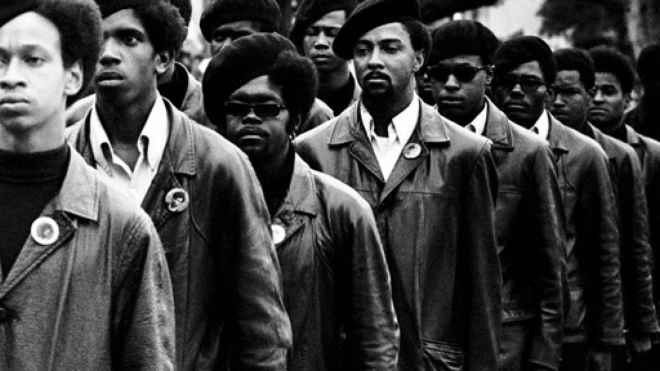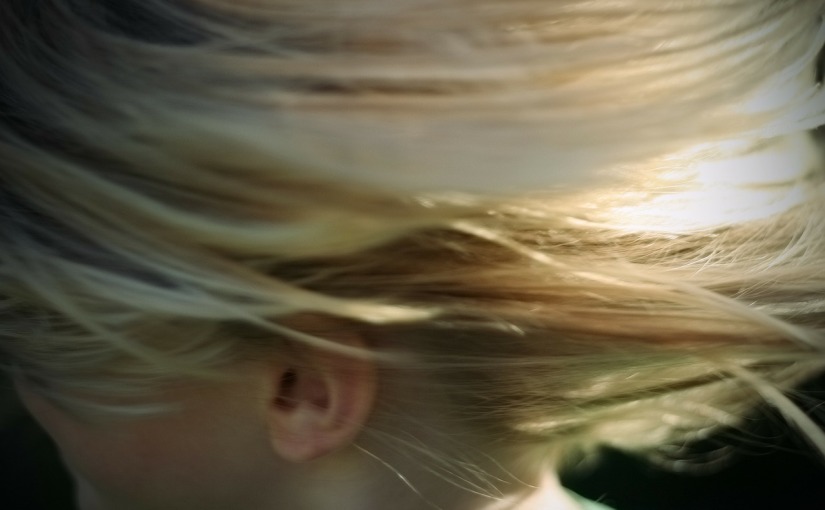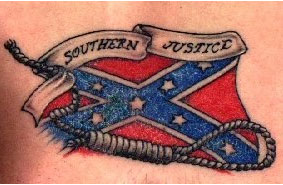First: watch this video. Then: have a happy new year. It’s been a rough one!
Beyond Beyoncé

After being lampooned by Jessica Williams on the Daily Show, Bill Varney responded by reiterating the very question that made him a late night laughingstock:
“Why do we have to bring race into everything in America, including the halftime show of the Super Bowl?”
While Bill is perplexed as to why race is brought “into everything in America,” I am incredulous as to why America refuses to acknowledge that everything is about race.
The Super Bowl is a perfect example.
The NFL is run by a cadre of rich white men. Its sole purpose is to give team owners, rich white men all, a forum in which their overwhelmingly black teams can compete. (NFL players are 68% black, as compared to the US population which is 13% black.) “Owners” also “draft” and “trade” their players.
Oddly, despite the fact that roughly 7-in-10 players are black, quarterbacks — the ones who “shout” the “orders” at the rest of the team — are virtually 100% white, and there has never been a black Super Bowl MVP.
As we witnessed at Super Bowl 50, Cam Newton is a welcome exception to the white quarterback club. He was courted with scholarships as a high school athlete, won the Heisman Trophy as a college athlete, and took the Panthers to the Super Bowl after winning Offensive Player of the Year in 2015.
But for all of those hard-earned accolades and coveted awards, if you were to transport Cam Newton and Bill Varney into midtown Manhattan right this second, who do you think would have more difficulty getting a cab at dusk? Who would be more likely to be pulled over if he was driving? Who would be more likely to get stop and frisked outside a bodega?
Who would be more likely to be mistaken as a worker at Nobu, a valet (or worse) outside the Grand Hyatt, a homeless man while waiting to cross the street?
Statistically speaking, who is more likely to have close friends in prison, to be the product of a single-parent home and an underfunded public school, to be shot by an officer of the law?
Beyoncé didn’t “bring race into” the Super Bowl; she gave a performance that illustrated the obvious. And what better venue to do so than the Super Bowl, the most watched television event of the year (the brain damage to which players — but not owners — are subject not withstanding).
A Maxima By Any Other Name
Until very recently, I drove a car that would have made the most transportation-desperate of high school seniors blush, wince and flee: a gold, 1992 Nissan Maxima. It was bought off a used car lot in 1995 for $10,000 and even after being demoted to the level of station car, at 200,000 miles it was mechanically perfect (its unseemly exterior of dents, dings and rust notwithstanding).
On the way to school one morning with my then nine-year-old son, we crossed paths with a new Maxima. “It’s been totally redesigned,” I explained. My son’s response blindsided me: “Then what makes it a Maxima?”
Without warning, my own son had stabbed me in the back with the paradox of the knife: If John has a knife, then he changes the blade, then later changes the handle, is it still John’s knife?
So, what precisely does make the redesigned Maxima a Maxima?
Let’s start with an easier question: What makes a Harley-Davidson a Harley-Davidson?
Some hog loyalists might say that Harleys built between 1969 and 1981 aren’t really Harleys. In 1969, the Harley-Davidson company was purchased by AMF. That purchase was the first break in the heritage of company ownership by descendants of co-founders William S. Harley and the Davidson brothers. Harley-Davidson was a family-owned business that had been stripped of its family. Then, in 1981, the company was purchased back from AMF by a group of investors that included Willie G. Davidson – a formidable bike designer in his own right and grandson of co-founder William A Davidson.
What makes a Porche a Porche?
Remember the 928, that front-engine, rear-transmission powerhouse that was intended to supersede the 911 line of rear-engine designs? Despite the 928S being faster than the 911 Turbo at the time, Porchefiles ignored the car for a number of reasons, not the least of which being that “real” Porches are rear-engine powered. Porsche halted production of the 928 after a 17-year run. The 911 series, which is still in production, was introduced in 1964.
What makes a Gibson Les Paul a Gibson Les Paul? In my opinion, a Les Paul is a Les Paul only if it was made at Gibson’s now defunct Kalamazoo plant.
In each example above, product identity is determined not by a nameplate, but rather by a heritage, a product mythology, a narrative that is meaningful to clan loyalists. And while clan members may argue over details, what each member shares is the belief in a specific product narrative that clearly marks the boundaries of what qualifies as a Harley Davidson, a Porsche, a Les Paul.
So, what makes a Maxima a Maxima?
The first Nissan Maxima dates back to 1976, when the Nissan brand was still sold under the Datsun name in the US. But it wasn’t until the third generation (1989 – 1994) that the Maxima truly came of age. Powered by a 3.0L V6, the 1976 Maxima was the first Japanese car to exceed Japan’s width restrictions making it a comfortable sedan for the US market. When you take power and couple it with comfort, you end up with what is, to this day, marketed as a “4-door sports car.”
Now in its seventh generation, the Maxima is bigger, faster, sexier, and boasts amenities that rival those of European sports sedans – those other “4-door sports cars.”
That, my friend, is what makes a Maxima a Maxima.
Their Bulletproof Vests
You grow accustomed to the heavy NYC Police and US Army presence in Penn Station. The stun guns and M16s amidst rush hour crowds don’t bother me.
What bothers me are the bulletproof vests.
Targets wear bulletproof vests, not guardians of the peace. And if these heavily armed, trained gunmen see themselves as targets, what do they see me as, and whom are they really there to protect?
Branded People and Their Brand Loyalists – Part 2
On a flight, seated beside none other than Lidia Bastiniach (see Part 1), I found myself both subject and object of an extemporaneous study of my own design.
The objective: To observe the effect celebrities (branded people) have on the behavior and attitudes of their fans (their brand loyalists).
Observations:
1) Lidia’s presence spontaneously caused me to evaluate my physical appearance:
- I was dressed in my “agency uniform” – blue blazer and dress shirt atop dark jeans. I consciously deemed my attire appropriate for the occasion.
- I was deeply satisfied when I noticed the specular highlights in my shoes.
- I was wearing French cuffs and I was conscious of a desire for Lidia to take notice of, but not comment on this fashion choice.
- When I went to the men’s room, I noticed that the left side of my collar was screwed up; I was relieved that Lidia was seated to my right.
- I was unshaven, but unconcerned as I felt this made me look more European.
2) Under normal circumstances I am between 30% – 50% propensed to engage in conversation with the person next to me. Lidia’s presence increased my propensity to 100%.
3) My conversation was singular in its purpose: to convince Lidia that I had a personal connection to her, to demonstrate to this branded person that I was brand loyal.
In the aggregate, all observed behavior was attributable to a single unmet need on the part of the test subject: validation. And that validation would come only by convincing this tribal leader that I was worthy of tribal membership.
After I introduced myself, our conversation focused almost exclusively on my tribal credentials: how my wife – who is part Italian – had introduced my son and me to “Lidia’s Italy”; the (Italian) recipes that had been passed down to my wife and her four siblings by their (Italian) mother; the photo in our kitchen of my son making his first tomato sauce (at the age of four). Clearly, this was my rite of passage and I didn’t want to screw it up.
The experience left me thinking about the idea of “earned membership” and how important this idea is to a brand. It is earned membership that makes an iPod more than an MP3 player, a Rolex (or a Swatch) more than a watch, a Mountain Hardware Absolute Zero (™) Parka more than a winter coat.
It is earned membership – or at least the perception thereof – that transforms a product into a brand.
Branded People & Their Brand Loyalists – Part 1
Bouncing around from city to city is the norm for those of in the research field. We fly through TSA security like it’s second nature, and our airplane seats the EZ chairs into which we recline to clear our heads.
But this flight felt different.
First off, there was an aura on the plane that was wrong for an early-morning business flight. Passengers were excited as they boarded, as if they were boarding Six Flags Twisted Colossus. Secondly, everyone seemed to be signaling to each other with smiles and gestures of excitement, communicating in a silent, sublime language I did not know. Clearly I was on the outside of some inside joke.
Then the woman seated next to me arrived. She was kind enough to ask if the carry-on she stowed beneath the seats in front of us bothered me. The question, I feared, was the part of the cabin-wide inside joke being perpetrate on me. Clearly, my aisle mate was in on it.
Then began a most perplexing parade. One after another, people boarded, paused by our aisle in deference to the woman next to me, and then proceeded in perfect single file to their assigned seats. There were hugs and handshakes, smiles and giggles, all peppered with intimate pleasantries exchanged in Italian.
When at last we pushed back, the kind woman next to me dozed off while reading The New York Times. Not to be outdone, I fired up laptop and promptly fell fast asleep.
It was not until I awoke that I took notice of something familiar in my aisle mate’s face. Though I had never seen it as I was seeing it now – bespectacled and in profile – I was seated next to a dozing Lidia Bastianich!
There was no inside joke in the cabin. Rather, I was the outsider seated amidst a tribe of chefs and the tribal leader was right next to me.
The account planner in me was shocked into vigilance: my flight spontaneously transformed into a clinical testing environment and I was both test subject and object.
The objective of the study: To observe the effect celebrities (branded people) have on the behavior and attitudes of their fans (their brand loyalists).
To be continued…
Insight, Part 2: Do blondes have more fun?
In Part 1 of this musing, I mentioned the following data points (c/o the Harvard Business Review):
- Blondes earn 7% more than brunettes
- Husbands of blonde women earn an average of 6% more than the husbands of women with other hair colors
That said, in this case, synthesizing a sound insight is not as straightforward as it was in the case of Sedaris’ observed correlation between marshmallows and faith in god.
Firstly, there is the subject matter: even when asked under testing conditions, people are prone to over-report their income, and minimize the extent to which personal insecurities affect their choices about their appearance.
Secondly, to synthesize an insight, say, for a women’s beauty product, we’d also have to determine whether or not non-blonde women are propensed to change the color of their hair for financial gain or materialistic matrimony.
Thirdly, we’d probably want to survey employers as well, none of whom would admit to appearance playing a part in salary level – and most of whom would not even be conscious of this phenomenon if it proved to exist.
There are ways to adjust for all of this so that accurate data is captured during testing. However the accuracy of the data will not help to avoid the next pitfall in our beauty campaign scenario: What to do if a strong correlation between a woman’s desire to be blond and her desire for money proves to exist?
While “blonds have more money and more fun” may be a sound insight, it is also be rather a brash message for a beauty product. Or is it?
The beauty industry relies heavily on celebrity endorsement in their advertising, the implication being that a portion of a celebrity’s success is attributable to the way a product makes him or her look. More “established” celebrities, who tend to be older than “rising star” celebrities, are preferred, the subtext being “I got to where I am today with the help of the products that made be beautiful.” To paraphrase, “I’m rich because of the way I look, and you can be as well.” Or as Kelly LeBrock said on behalf of Pantene, “Don’t hate me because I’m beautiful.”
“Blonds have more money and more fun” would make for a ruthless tagline, but, it the case at hand, it is both a valid insight and a message which advertisers have successfully conveyed in subtle – and at times not so subtle ways.
In the end, one should never fear synthesizing an unflattering insight; affective creative can take the harshest of truths about human nature and deliver them in a ways that make us feel confident, optimistic and, yes, even beautiful.
Insight, Part 1: Correlation is *Something*
I was shamed by their good will and mortified by their cooking. There seemed to be some correlation between devotion to God and a misguided zeal for marshmallows.
– David Sedaris, c.o.g.
Planners, analysts and researchers of all shapes and sizes take pleasure in preaching, ad nauseam, that correlation and causation are not even distant mathematical cousins. That said, a client once put me in my place with a pithy truth on the topic: “It may not prove causation, but correlation is something!”
He, of course, was absolutely correct: correlation does not prove causation, but correlation damn sure is something. And not only is it something but, truth be told, correlation is often presisely what we look for when we collect and analyze consumer data.
Put another way, not only is correlation most definitely something, but that something might very well be the seed of a defining customer insight about a targetable segment.
Sedaris’ observation about religious faith and marshmallow culinary ingenuity – from his delightfully scathing essay, c.o.g. (book here, movie here) – is easy to frame as a research objective and test quantitatively. If correlation between faith, marshmallows, and, say, some rudimentary demographics proves to exist, this correlation alone might form the foundation for a sound marshmallow marketing strategy: think occasion-based messaging, premium and loading tactics, product development (marshmallows that melt at specific temperatures for specific purposes, marshmallows mixed with different spices), and product extensions (see cooks.com, not to mention Amazon).
Consumer insight? Yes!
Is it an actionable insight? Most definitely!
What of causation? Totally irrelevant at this early phase in our marshmallow renaissance scenario, but also a subject of crucial importance for later research waves.
This reminds me of an interesting factoid I heard a few years back by way of the Harvard Business Review:
- Blondes earn 7% more than brunettes
- The husbands blonde women marry earn an average of 6% more than the husbands of women with other hair colors
Consumer insight? To be continued…








